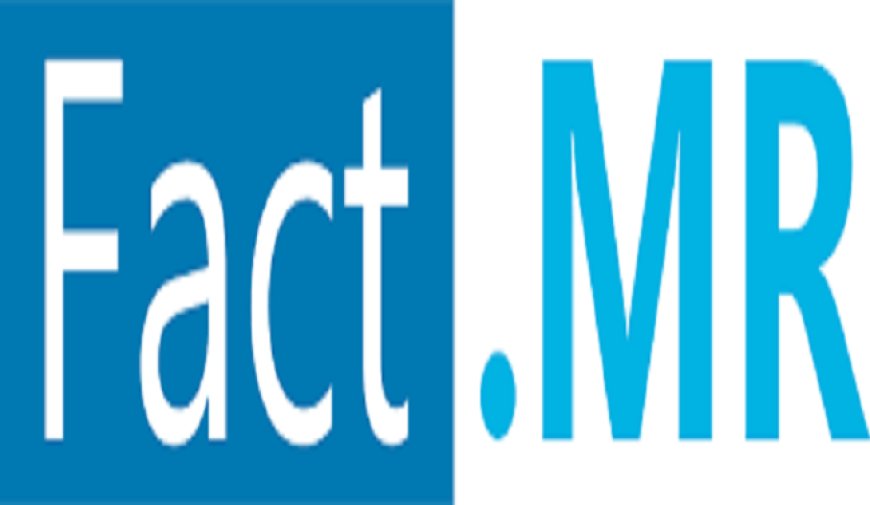Sodium Cocoyl Isethionate Market Future Scope Competitive Analysis & Revenue by Fact MR
The global sodium cocoyl isethionate market is projected to be worth US$ 199.7 million in 2023 and is expected to grow at a CAGR of 5.8%, reaching US$ 350.9 million by 2033.

The global sodium cocoyl isethionate market is projected to be worth US$ 199.7 million in 2023 and is expected to grow at a CAGR of 5.8%, reaching US$ 350.9 million by 2033.
Sodium Cocoyl Isethionate (SCI) is a mild surfactant widely used in personal care and cosmetic products. Derived from coconut oil, it is known for its gentle cleansing properties, making it an essential ingredient in shampoos, body washes, facial cleansers, and bar soaps. The market for Sodium Cocoyl Isethionate has been witnessing steady growth, driven by increasing consumer preference for sulfate-free and eco-friendly personal care products. The rising awareness of the benefits of SCI, such as its biodegradable nature and skin-friendly properties, has contributed to its expanding adoption across various industries. Additionally, its mildness and compatibility with sensitive skin make it a popular choice among formulators looking to create high-performance cleansing products without harsh chemicals.
Get Free Sample Copy of This Report-https://www.factmr.com/connectus/sample?flag=S&rep_id=3287
Market Insights
Several factors influence the market dynamics of Sodium Cocoyl Isethionate. The shift towards natural and organic ingredients in skincare and haircare formulations has significantly fueled demand. Consumers today are more conscious about the ingredients in their beauty and hygiene products, leading to a surge in demand for plant-based and non-toxic alternatives. Moreover, regulatory agencies and environmental organizations are pushing for sustainable and biodegradable ingredients, further encouraging manufacturers to integrate SCI into their formulations. Additionally, the versatility of Sodium Cocoyl Isethionate makes it suitable for various applications, including syndet bars, liquid cleansers, and bath bombs, expanding its market potential.
Market Outlook
The future of the Sodium Cocoyl Isethionate market looks promising, with increasing consumer awareness and industry shifts toward sustainability. The demand for sulfate-free products is expected to drive further growth, particularly in regions such as North America, Europe, and parts of Asia. Technological advancements in the production of SCI, improving its efficacy and compatibility with different formulations, are likely to expand its usage across new product categories. The growing trend of zero-waste and waterless beauty products, including solid shampoos and body bars, is another factor boosting market demand. Additionally, collaborations between ingredient manufacturers and personal care brands to develop innovative and customized formulations will likely contribute to the positive market outlook.
List of Key Companies Profiled in The Report
- BASF SE
- Innospec Inc.
- Clariant International Ltd.
- Galaxy Surfactant Ltd.
- AkzoNobel N.V
- Others
Market Growth
The Sodium Cocoyl Isethionate market is experiencing significant growth due to its increasing adoption in natural and sustainable personal care products. The shift towards clean beauty, driven by consumer awareness and stringent regulatory standards, has propelled the growth of SCI as a preferred surfactant. Additionally, advancements in formulation science are enabling manufacturers to enhance the performance of SCI-based products, making them more effective and appealing to a broader audience. The expansion of the cosmetic industry, particularly in emerging markets, is also playing a crucial role in market growth. Countries in Asia-Pacific, including China, India, and South Korea, are witnessing a surge in demand for premium and natural personal care products, creating lucrative opportunities for Sodium Cocoyl Isethionate manufacturers.
Recent Industry News
The Sodium Cocoyl Isethionate market has seen several notable developments in recent times. Many personal care brands have been reformulating their products to replace harsher sulfates with gentler surfactants like SCI. In response to rising environmental concerns, several companies have launched solid and water-free beauty products featuring SCI as a key ingredient. Furthermore, ingredient suppliers are investing in research and development to improve the efficiency, stability, and foaming properties of SCI, making it more adaptable to various formulations. There has also been an increase in strategic partnerships between raw material suppliers and cosmetics brands to ensure a steady supply chain and innovation in product offerings. Additionally, regulatory agencies continue to emphasize the importance of using biodegradable and skin-friendly surfactants, further driving the industry towards increased SCI adoption.
Notable Developments
In recent years, several notable developments have shaped the Sodium Cocoyl Isethionate market. The introduction of sulfate-free and eco-conscious personal care products by leading brands has significantly increased the visibility of SCI. Additionally, advancements in sustainable sourcing and manufacturing processes have improved the environmental footprint of SCI production. Many companies are exploring novel extraction and synthesis techniques to enhance the purity and effectiveness of SCI, making it even more appealing to formulators. The rise of DIY beauty and home-based product formulation has also contributed to increased consumer interest in Sodium Cocoyl Isethionate, as it is widely used in homemade shampoo bars and cleansers. Moreover, regulatory changes promoting biodegradable ingredients are expected to further accelerate market growth in the coming years.
Competitive Landscape
The competitive landscape is shaped by manufacturers prioritizing mergers and acquisitions to expand production capacity and strengthen their global presence. Establishing long-term trade relationships with end-users is a key strategy to drive the sodium cocoyl isethionate (SCI) market and ensure stability during unfavorable trade conditions.












